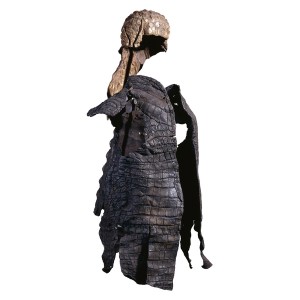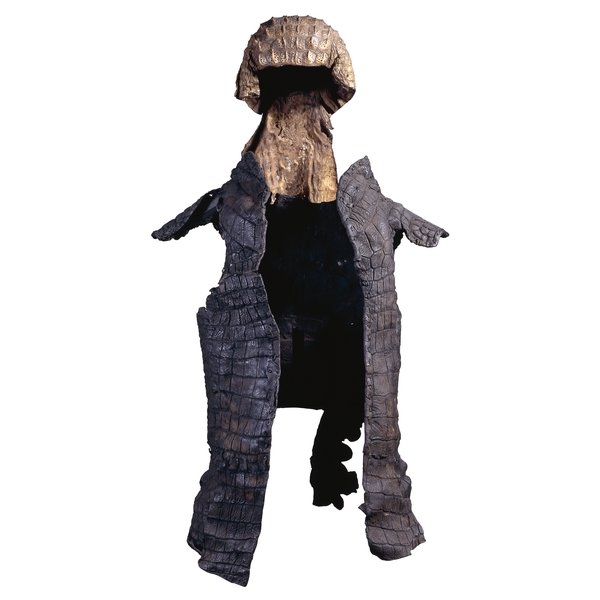My favorite object in the British Museum is one you’ve likely strolled past dozens or even hundreds of times without giving it the slightest notice. When one is confronted with colossal Sassanid temple architecture and the heroic Elgin Marbles, it’s easy to miss some of the less striking portions of the vast collection on display. After many years and many visits, I’ve finally come to accept that my favorite piece, for now, is the Crocodile-skin armor of a 3rd-century Roman soldier in Egypt. Have a look, and click here for its own page at the museum. Mystery cults were very popular in late antiquity. They tended to radiate from the Near East or Egypt, and the offered a cool and exotic alternative to mom and dad’s boring old standard Greek and Roman pagan pantheon of deities and demigods.
Here is the British Museum catalog description:
Crocodile-skin suit of armour,
Roman, 3rd century AD
From near Manfalut, Egypt
 “In ancient Egypt the crocodile was seen as sacred and divine, and worshipped as a god, so this suit might have been worn by priests of the crocodile sect who by wearing such a garment would take on the spirit of the deity. In many parts of Africa the crocodile is seen as a fearsome and invincible creature and so I think that by wearing crocodile armour and a headpiece like this, a warrior might be transformed in some magical way and take on the attributes of the animal.” Fowokan George Kelly, of Jamaican origin
“In ancient Egypt the crocodile was seen as sacred and divine, and worshipped as a god, so this suit might have been worn by priests of the crocodile sect who by wearing such a garment would take on the spirit of the deity. In many parts of Africa the crocodile is seen as a fearsome and invincible creature and so I think that by wearing crocodile armour and a headpiece like this, a warrior might be transformed in some magical way and take on the attributes of the animal.” Fowokan George Kelly, of Jamaican origin
When the province of Egypt became part of the Roman Empire, it put Romans into direct contact with Egyptian culture and religion. In Egypt Roman garrisons were closely integrated into civic and religious life and participated in local cults. Around Manfalout, on the banks of the Nile in central Egypt, Roman soldiers were particularly attracted to the crocodile cult centred on the sacred grottoes of the region.
This imposing armour is made from the skin of a crocodile. It comprises a helmet and cuirass (body armour) and would have been used in military-style ceremonies of the regional crocodile cult. The skin has been radio-carbon dated to the third century AD. It was presented to the British Museum in 1846 by a Mrs Andrews, who was among a group of European travellers to Manfalut who found grottoes containing the mummified remains of humans and animals, including many crocodiles.
Although the cold, dry environment of the grotto preserved the suit well, the cuirass in particular was flattened and brittle. It has been painstakingly remoulded by the British Museum’s Department of Conservation.
M.J. Aitken, Science-based dating in archae
(London, Longman, 1990)
J. Jespersen and J. Fitz-Randolph, Mummies, dinosaurs, moon rocks
(New York, Athenium Books, 1996)
S. Bowman, Radiocarbon dating (London, The British Museum Press, 1990)
I discussed the allure of a cult of a Crocodile god with E-Verser Patrick, who said his favorite part of the description was the description of a “regional crocodile cult,” which is historically accurate (they surely sprang up as far away as Rome itself), but it put him in mind of a VFW or Four H club. He decided to launch his own. Join now!




No Comments